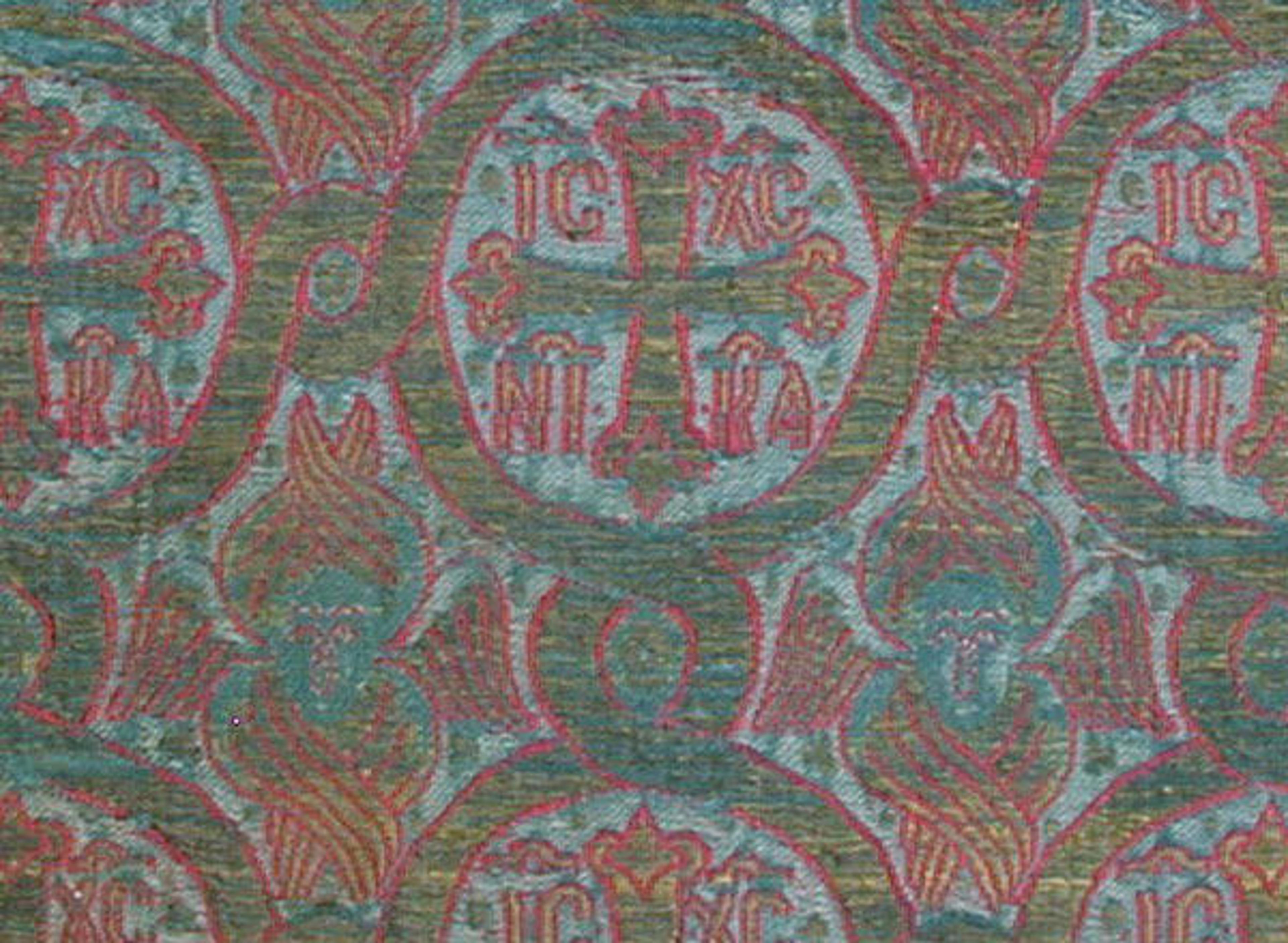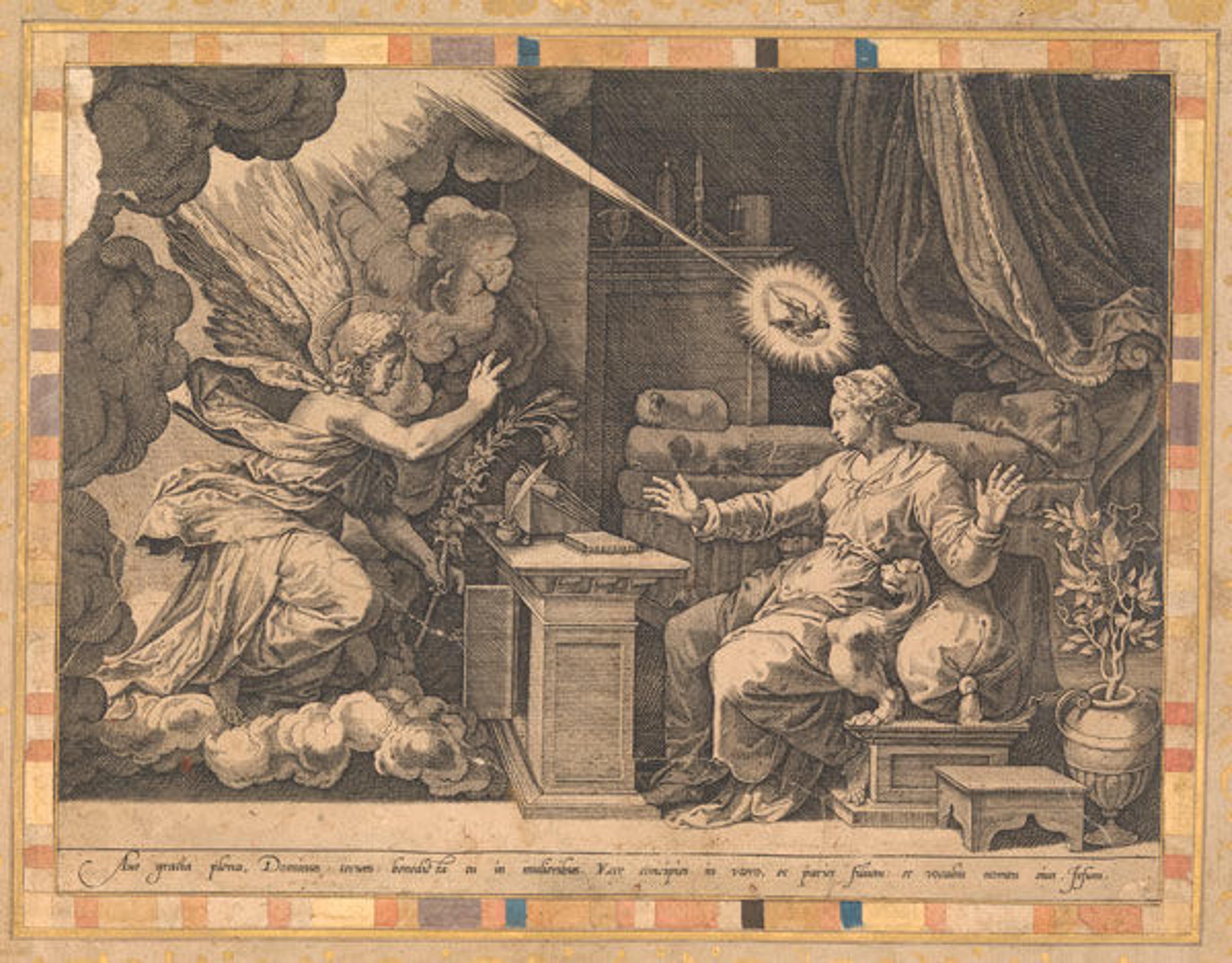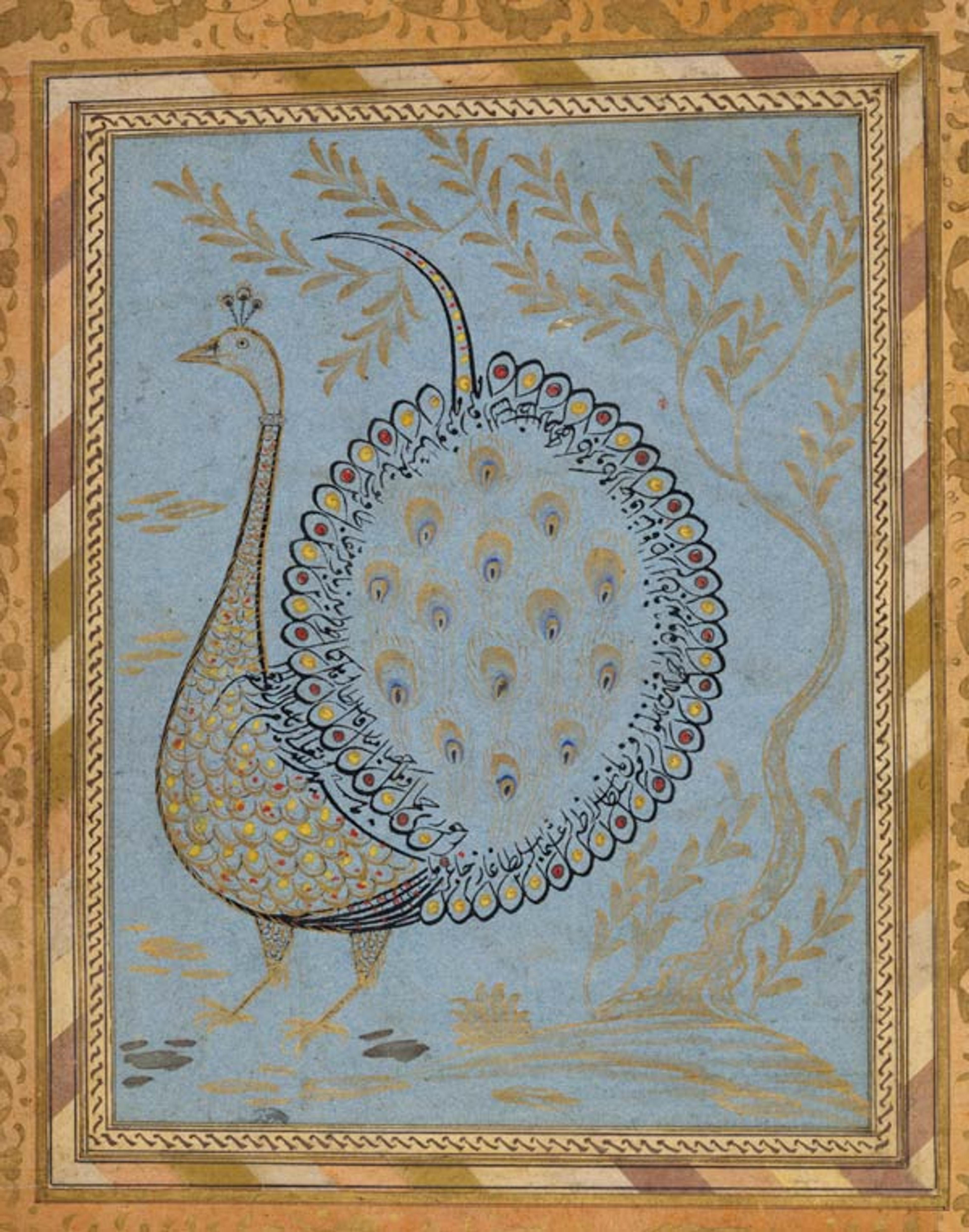
Silk textile with seraphim and crosses (detail), 16th–17th century. Turkey, Istanbul or Bursa. Islamic. Silk and metal-wrapped threads; lampas weave; H. 21 1/8 in. (53.7 cm), W. 24 5/8 in. (62.5 cm). The Metropolitan Museum of Art, New York, Rogers Fund, 1917 (17.22.2a–d)
«At any given time, the Department of Islamic Art usually has objects from our permanent collection on loan to exhibitions at other institutions (such as The Fabric of India, currently on view at the Victoria and Albert Museum in London). In addition, we also lend to other departments within the Met. At the moment, four objects from our collection are on display in gallery 599, in the exhibition Liturgical Textiles of the Post-Byzantine World. The exhibition draws from the holdings of several curatorial departments, including Medieval Art and The Cloisters and European Sculpture and Decorative Arts, as well as Islamic Art. Together, objects from these various collections tell an international story of textile production and trade in the post-Byzantine world.»
Formerly the capital of the Byzantine Empire, Constantinople became known as Istanbul after it was vanquished, in 1453, by Ottoman Sultan Mehmed II, known as "The Conqueror." Islam became the state religion of the Ottoman Empire, but the imperial textile workshops at Bursa and Istanbul continued to produce spectacular silks with Christian iconography, which were then exported to locales as far away as Moscow. Typical ornaments, such as in the example above, include crosses and Greek abbreviations for the name of Jesus Christ, written as "ΙϹ ΧϹ," and the term for victorious, written as "ΝΙΚΑ." Alternating among the cartouches are seraphim—angels whose three pairs of wings extend above, below, and to the sides of their oval faces.
The exhibition also includes the so-called Bellini Album, which contains an assemblage of works on paper, from Persian and Ottoman drawings and calligraphy to European prints of Christian and other subjects.


"The Annunciation" (top) and "Seven Devotional Scenes" (bottom), folios from the Bellini Album, ca. 1600. Print: Italy or the Netherlands; album: Turkey. Ink, opaque watercolor, and gold on paper; H. 8 3/8 in. (21.2 cm), W. 6 3/4 in. (17.2 cm). The Metropolitan Museum of Art, New York, Louis V. Bell Fund, 1967 (67.266.7.3v; 67.266.7.4r)
We believe the album was assembled in Turkey during the first half of the seventeenth century for Sultan Ahmed I (r. 1603–17) to enjoy as part of his private library. It is referred to as the Bellini Album because the original arrangement also contained a portrait of a Turkish Prince by the Venetian artist Gentile Bellini (ca. 1429–1507), who served as a visiting painter to Istanbul from 1479 to 1481. By the time the Met purchased the album, in 1967, this and a few other folios had been removed. Nonetheless, the current compilation is a fascinating assemblage of both Christian scenes and Islamic art—such as the calligraphic peacock painting below—illustrating the cross-cultural interest in the arts during the Ottoman Period.

"Calligraphic Composition in Shape of Peacock," folio from the Bellini Album, ca. 1600. Print: Italy or the Netherlands; album: Turkey. Ink, opaque watercolor, and gold on paper; H. 9 9/16 in. (24.3 cm), W. 7 1/16 in. (17.9 cm). The Metropolitan Museum of Art, New York, Louis V. Bell Fund, 1967 (67.266.7.8r)
These treasures will be on view together in Liturgical Textiles of the Post-Byzantine World through November 1. After viewing the exhibition, be sure to visit the Antonio Ratti Textile Center and Reference Library to check out the fantastic resources they offer.
Resources
Atasoy, Nurhan, Walter B. Denny, et al. İpek: The Crescent & the Rose: Imperial Ottoman Silks and Velvets. London: Azimuth Editions Ltd. on behalf of TEB İletişim ve Yaypıncılık, 2001.
Carboni, Stefano. Venice and the Islamic World, 828–1797. New York: Metropolitan Museum of Art, 2007.
Martin, F. R. The Miniature Painting and Painters of Persia, India, and Turkey from the 8th to the 18th Century. London: B. Quaritch, 1912.
Woodfin, Warren. "Orthodox Liturgical Textiles and Clerical Self-Referentiality." In Dressing the Part: Textiles as Propaganda in the Middle Ages, edited by Kate Dimitrova and Margaret Goehring, 31–51. Turnhout, Belgium: Brepols, 2014.
Related Links
Liturgical Textiles of the Post-Byzantine World, on view August 3–November 1, 2015
View all blog posts related to this exhibition.